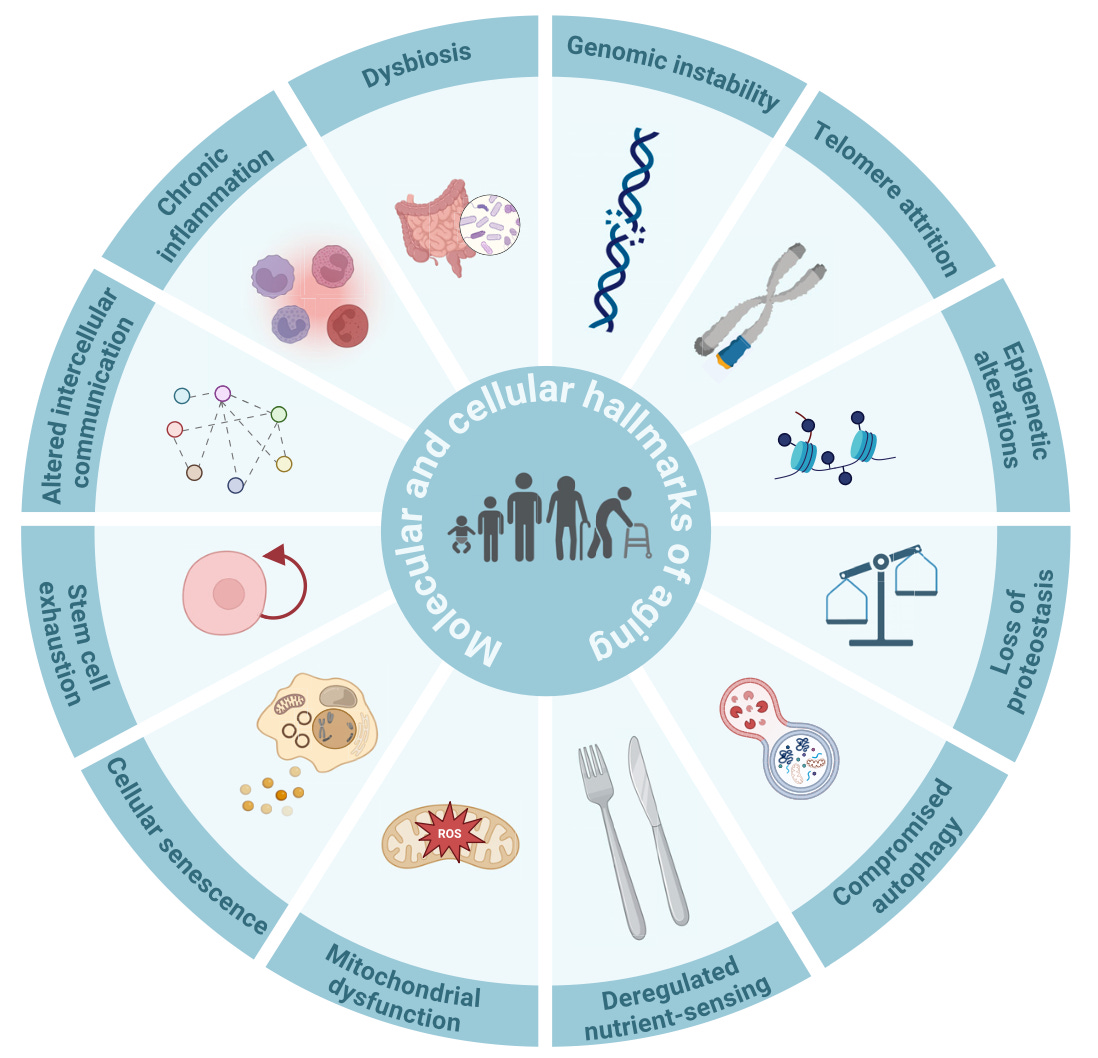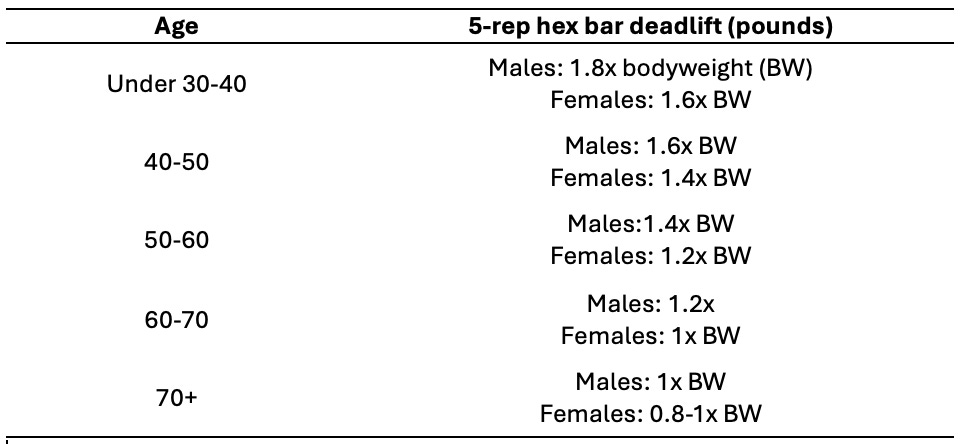To measure aging, measure performance
Why physical performance serves as a great aging biomarker
“We grow, mostly, by dying” - a psychiatrist in Boston
Scientists have been interested in the aging process for quite some time and some argue aging itself a disease. As one of the biggest risk factors for many diseases, curing, or delaying it would be a big win.
But that would mean we need a good way to measure it, and is there something we can use other than the calendar?
A recent review article published in Physiological Reviews covers to current state of aging biomarkers, from DNA methylation clocks to grip strength.
Hallmarks of Aging
The Hallmarks of Aging are what defines aging on a cellular level. They have 3 criteria:
They change (go up or down) as you get chronologically older
When you over-activate them, aging is accelerated
When you block or reverse them, aging slows down
Understanding these mechanisms will, in theory, allow for a blood test to provide our “biological age”, or the age of our insides. It would be really cool to know that, because then we can test and re-test to see what interventions potentially slow down aging, if any.
It would be a phenomenal research tool because we could test something (drugs, exercise) and not have to wait several years to record mortality rates to see if worked.
Epigenetics & Molecular Clocks
Epigenetics is the study of how your genes are expressed, and lifestyle influences it a lot. This is good news. Even with a less favorable set of genes, you aren’t doomed.
Genes are like a light in your room with a dimmer switch. Increased expression makes it brighter, decreased expression makes it darker. A gene in our quadriceps might control how big our muscle gets. Turning the switch up = you get jacked. Exercise, and many other things, leads to “tags” being put on a gene that controls its expression, and in this case, its size.
An interesting study had people do endurance training of only 1 leg for three months. Afterwards, the trained leg had gene expression changes in over 4,000 genes versus the leg that did nothing. Scientists at Joslin Diabetes Center have shown these exercise effects are transmitted to your children. Other things like smoking induce epigenetic changes in a negative direction.
Epigenetic aging clocks (like DNAgem PhenoAge, GrimAge) first came about in 2013 and claim to report biological age, and they are continually being refined/improved.
These clocks are complex mathematical models using DNA methylation (a type of epigenetic “tag”), or other molecules to predict biological age. I won’t pretend to give you a detailed breakdown because the modeling behind it goes over my head.
To date there’s still a lot of uncertainty and they haven’t been completely validated. Some have shown promise, and the science is really interesting, but we aren’t yet at the point where we can use these with confidence, such as to determine age-reversal or age-acceleration.
There’s also no standardization between the available molecular clocks on the market, so they’re all measuring things slightly differently. One study tested 6 different clocks on the same blood samples and some of the predictions were 9 years apart.
Another issue is that they aren’t tissue-specific because they use blood samples. One might catch something beneficial in the blood reflecting liver or muscle health and say you’re biologically young but be overlooking an aging-related issue in your brain that is more difficult to detect in blood samples.
There’s also clinical aging clocks that use blood biomarkers measured in a typical doctor’s visit, but applying complex modeling to predict biological age. These seem more practical for the masses in my opinion, and may be pretty accurate.
From Cellular to Functional Hallmarks of Aging
Ultimately, cellular aging changes are often reflected in functional measures that are much easier to measure and also track very well with the aging process.
What I like about the Functional Hallmarks is that we relate to them better, and they’re what actually matters. Easily getting up out of a chair, the ability to jog, climb stairs, carry heavy groceries, be attentive in a conversation, etc., are all relevant activities that improve quality of life and require adequate performance in the Functional Hallmarks.
When you improve function, the cellular stuff follows along, like the 1-leg exercise study I mentioned. However, in the reverse direction, we aren’t as certain that these biological aging clocks directly translate to improved function.
Another advantage is that we have hundreds, probably thousands of studies showing how physical function changes over the lifespan, from people that are extremely sick to elite athletes and the best “age-ers” among us. This is critical because we have benchmarks to compare ourselves to, unlike the ambiguous molecular clocks.
DIY Aging Biomarkers
We can test the Functional Hallmarks quite easily. For research purposes, the high-tech measurement methods are common place in any human research center I’ve ever worked in, many of which offer reasonably priced pay-for-services for the general public. However, for little cost, you can measure nearly all of them on your own. Here’s how:
Brain health. Online cognition tools, such as this one developed by the University of Oxford, can be useful. I’m not saying this should replace seeing a medical specialist, but there are many of these types of validated tests out there.
Neuromuscular function. The ability to sit down to the floor and stand back up (sit to stand test) does the trick (video from the study), as does testing your balance which is related to dementia risk and easily testable in your living room with the Balance Error Scoring System.
The sit-to-stand test is actually quite challenging. I can’t do it — and while I don’t think it that reflects poor aging because it’s only one of many tests, it’s a good one to strive for since we have data on it. Also, it’s pretty easy to see how the ability to do it would be beneficial in your later years.
Muscle strength and power. The 30 second chair stand test is the simplest—see the link for instructions and scoring. But if you have a good score, don’t stop there. Focus on steadily improving any leg-dominant exercise in the weight room (leg press, squat, deadlift). The more weight you can push in the gym, the easier the chair test will be. For the upper body, I like pull-ups and push-ups.
For muscle power: vertical jump or a stair climb test. Put some chalk on your hand, jump as high as you can and touch the wall, then measure the height. I personally like the stair climb test, which is just how quick you can get up a set of stairs. There’s validated tests out there (4 stars, 10 stairs, etc.), but really you just need to find something that’s 10-20 stairs, give a hard effort, and always try to beat your score.
A bit more technical/advanced, but the reverse medicine ball throw is also great, full-body movement and can be measured easily on a football field with a friend.
Cardiorespiratory fitness. The Cooper Run Test. Find a track, warm up, and run as far as you can in 12 minutes. Plug the distance into this calculator and you have a good VO2max estimate.
There is also plenty of data on performance for various distances across the lifespan for sports like rowing, running, and cycling. I really like the Concept2 machines for this purpose because if you create an account on their site, you can record an effort, rank it online, and compare to others around the world.
Many people use it, so you can see which percentile you fall in for various distances and then aim to shoot as high as possible for your age group, or even younger age groups. If you’re above the 50th percentile for the age group a decade younger, I’d say you’re aging pretty well.
Body composition. Waist circumference (tape measure) relates to metabolic and cardiovascular health. With skin fold calipers (cheap on Amazon) you can also measure body fat percentage with the help of a friend (how to video, and calculator for the results).
Bone density. I can’t help with a DIY test here. This would require a DEXA scan, which may run you anywhere from $75-200. But, it’s worth it!
Using the DIY biomarkers
After the age of 30-40, strength and VO2max will, on average, start declining at about 1-2% per year. So, to put this into practice you should record your data over time and see if you’re delaying the expected average decline. I suggest setting goals to see if you’re on track: if you want to be able to carry 30lb of groceries in each hand when you’re 70, you should be able to comfortably carry ~80lb per hand when you’re 40.
What I Think Are Reasonable Strength and Endurance Standards
The table below can be used as aging biomarkers for aerobic fitness, in Cooper Run Test terms. These distances roughly correspond to VO2max data from this study, with the lower end of the range corresponding to the fitness needed to cut your mortality risk in half compared to someone with the lowest fitness levels in the study (sedentary).
I personally believe everyone could run 1.5+ miles in 12 minutes (8:00/mile) well into their later years with consistent training (assuming no physical limitations).
For strength, let’s use a 5-rep hex bar deadlift since it’s pretty low risk, hits all the relevant lower body musculature, and works your grip strength. 1-rep max efforts aren’t necessary for 99% of people and are low on the risk-reward equation.
The table below is a general guideline initially based on myself (175-180 lb). I’m almost 30 and 1.8x bodyweight is 315 lb. Assuming a strength loss of 1% per year, if I make it to 70 I should be able to deadlift 190lb 5 times, which is 1.1x my bodyweight. Both of which in my mind are completely reasonable. Obviously my bodyweight may change by then and it may require an adjustment.
The main point is that if you’re on track to deadlift your bodyweight by the time you’re 70, you will be above and beyond the required strength needed for activities of daily living. You’ll be thriving and avoiding frailty, which is the common issue I see with older adults.
With All That Said, Physical Performance Doesn't Prevent Aging
I wanted to make a final note that while I am a big advocate for fitness, hard training, and overall physical activity, even the most fit people still succumb to aging. You age better for sure, but it still happens. However, how you perform physically is a phenomenal indicator of the aging process. As of now, in my opinion, it is just a good a surrogate as the molecular level aging clocks, but I am definitely looking forward to see the science advance in that area.
Sean Langan has his PhD in exercise physiology. He is interested in how exercise training rewires our biology and harnessing the intersection of human physiology, technology, research, and coaching to improve human performance. Please contact if there are any topics you’d want to see covered next.







